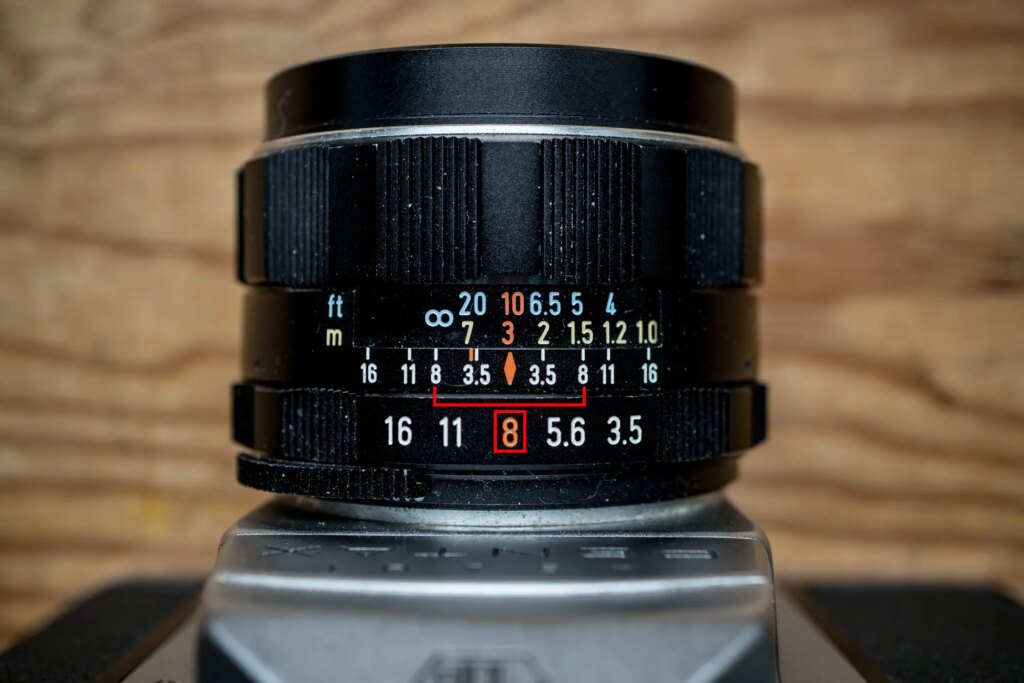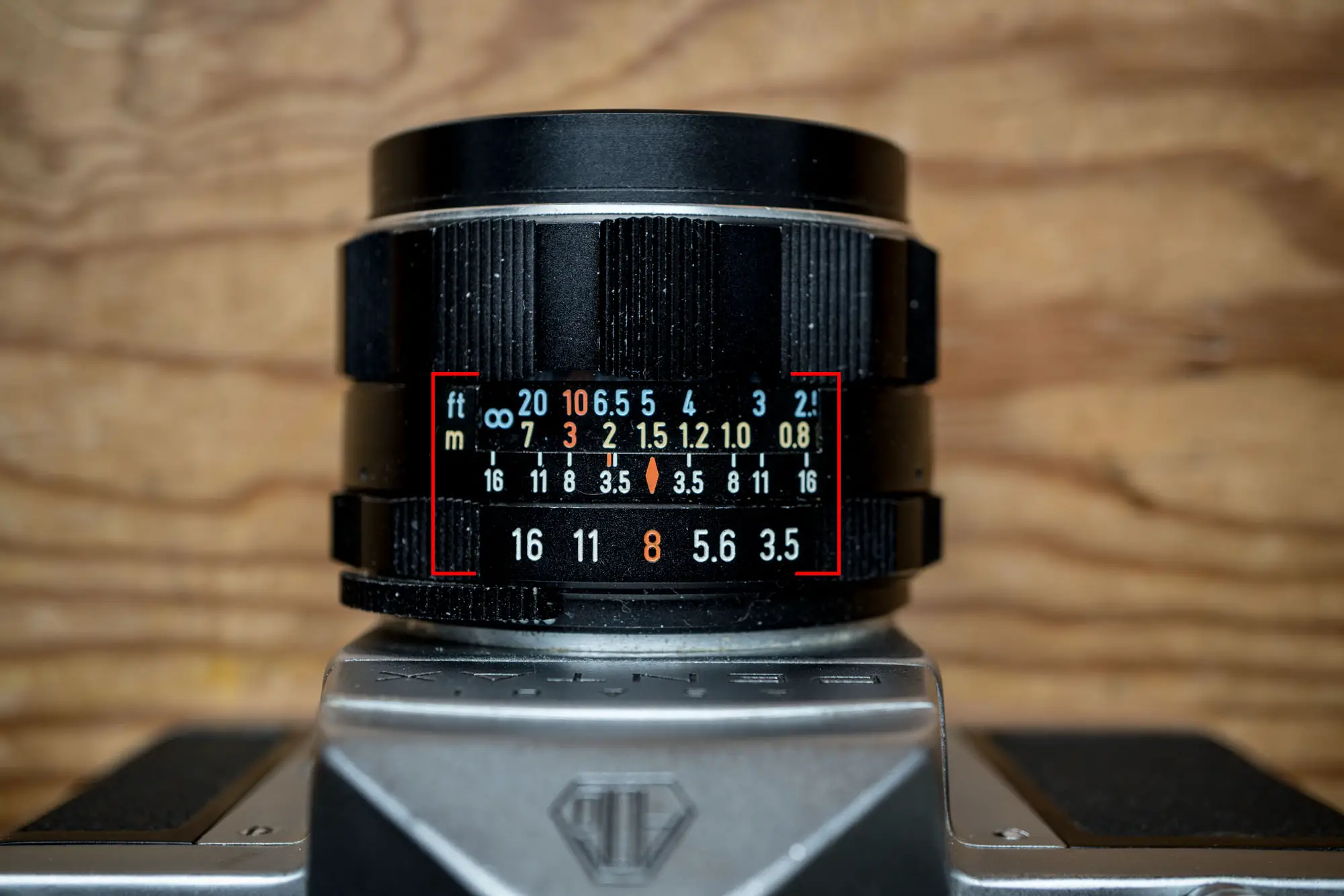After publishing this, I was asked to write a more detailed version of this post for the Ilford Photo website – you can find it here
Scale/Zone focusing is a very simple method of getting sharp photos without relying on auto focus or any viewfinder-based manual focus aid such as a rangefinder. It’s a method of focusing your camera before the camera is even pointed in the right direction. This has the distinct advantage of dramatically increasing the speed at which you can take the photo once the camera has been pointed in the right direction.
Many lens from the middle part of the 20th century were well suited to this method of focusing, so to illustrate how to zone focus I shall reference a very nice 28mm Pentax lens from around that period!
The scales visible in the photo at the top should be familiar – if you don’t know what they are for you’re in the right place! First off, here we can see that we have the aperture set to f/8. We can also see that the camera is set to focus at 3 metres.

With the aperture set to f/8, we refer to our depth of field scale and the little white numbers. Where the little white 8 numbers line up with the distances on the focus scale, this gives us a ‘zone’ of what will be in focus when set to f/8. In this case we can see that at f/8 with the camera focus set at 3m, we have everything between 1.5m and and infinity in focus… We can see an illustration our Depth of Field!
With this knowledge, a basic concept of distance and an understanding of the “sunny 16 rule” there is no reason you can’t go out shooting with a manual camera and lens completely unaided.
Cheers for reading
Hamish
Share this post:









Comments
Richard Taylo on Scale/Zone Focusing – A Tutorial
Comment posted: 28/07/2017
Comment posted: 28/07/2017
Comment posted: 28/07/2017
Pedro Marreiros on Scale/Zone Focusing – A Tutorial
Comment posted: 12/01/2018
I recently bought myself a 1958 Yashica 35 Rangefinder Film Camera. Please could you go more in depth with your explanation and maybe explain what the focus should be at all the F positions and not just F/8. I am a beginner and need help with this please!
Comment posted: 12/01/2018
Voigtlander Bessa R review - Kosmo Foto on Scale/Zone Focusing – A Tutorial
Comment posted: 09/05/2020